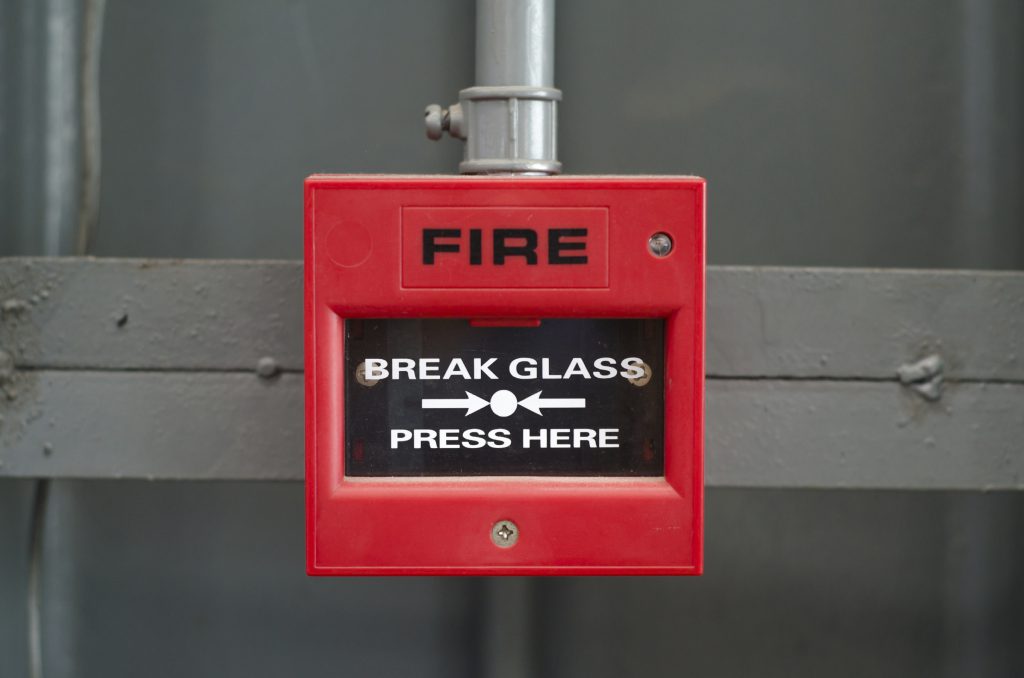Fire alarms and smoke detectors are usually things that we take for granted. Most of us have these useful life-saving devices installed in our homes and places of work, and although we rely on them to work when we need them, few of us actually know much about fire alarms and smoke detectors. Here at Protect & Detect, we want to make sure all property owners are fully informed about the fire alarm systems in place so here is a little about their history to get you started.
The History of Fire Alarms
In the old days, fire alarms were very low-tech. Members of the community would be in charge of monitoring the area for fires and would alert people by blowing a whistle or ringing a church bell.
The members of the community would then work together to put out the fire. However, as time went on and communities became larger and larger, this system became impractical.
In the 1850s, a type of wooden rattle was developed in Australia that was shaken to wake people up when there was a fire.
In 1852, Moses Farmer and William F. Channing designed two fire alarm boxes, each of which contained a telegraphic key.
When someone detected a fire, they would crank the handle that was attached to the fire alarm box, which would then send the details of the fire alarm box number to a central alarm station.
As soon as the telegrapher at the station received the message they would notify the fire department response team of the box location.

Back in 1890, Francis Robbins Upton patented the design of the modern fire alarm. However, his design was largely unpopular and received little attention at first.
But it was not long before people recognised the importance of this fire alarm and it became widely used, especially in cities and large towns where fire departments needed to respond to fires quickly and could not simply rely on the community to be vigilant.
The first modern fire alarms were developed in the 21st century. These fire alarms work without wires and use a range of different types of modern technologies such as cellular transmitters, private radio systems and digital communicator systems.
This modern technology allows the fire alarm signal to be transmitted to the nearest fire department in a matter of seconds so that a fire fighting team can be dispatched.
The History of Smoke Detectors
This device is perhaps one of the most important inventions of the 20th century.
These days, smoke detectors are usually designed as plastic enclosures that are made in the shape of a disk and are typically one inch thick and six inches in diameter.
In the late 1930s, Swiss physicist Walter Jaeger accidentally invented the first smoke detector.
He was actually attempting to design a sensor that could identify poison gas. However, when Jaeger lit a cigarette he discovered that his invention could detect smoke particles. Unfortunately, smoke detectors tended to be very expensive, which prevented them from being used commercially.
In 1965 Stanley Bennett Peterson and Duane D. Pearsall invented the first home smoke detector.
This device was cheap enough to be installed in most homes, although it was not widely used in homes until the 1970s. Legislation in the USA in the 1980s required smoke detectors to be installed in each and every home.
The Sears company acted quickly and obtained the full distribution rights for the home smoke detector.
Despite the legislation, many people were slow to react and research showed that in 1993 only around 92% of homes had smoke detectors, although today they are installed in all homes as standard. For more information, take a look at our explanation of how smoke detectors work.
Protect & Detect is a leading fire safety and security company, servicing Ipswich, Colchester, Cambridge, Bury St. Edmunds, Chelmsford and beyond.
Protect & Detect offers a wide range of fire safety and security services including; fire alarms, fire extinguishers, burglar alarms, intruder alarms, fire sprinkler systems, access control, door entry systems, CCTV, barriers, nurse and warden calls. Contact our friendly team today for a quick quote.

